Sir Matt Busby Way, Old Trafford, Stretford, Manchester M16 0RA
Located in Manchester’s Old Trafford district, the renowned Old Trafford Football Stadium stands as a symbol of global prestige. This iconic arena is the dwelling place of the esteemed Manchester United Football Club, an exceptionally triumphant team in the realm of football.
The stadium, steeped in a rich legacy of achievements and customs, has experienced numerous enhancements and enlargements, rendering it one of the most advanced and awe-inspiring football venues on the planet.
Initially referred to as the Manchester United Football Ground, the stadium opened its doors in 1910, with its design credited to Archibald Leitch, a Scottish architect responsible for crafting several other distinguished football stadiums across England.
Old Trafford swiftly rose to prominence as one of England’s premier football venues and has remained the heart of Manchester United ever since.
Over time, significant restorations have taken place, such as the construction of the Stretford End stand in the 1930s, the South Stand in the 1950s, and the North Stand in the 1970s. The most recent and substantial refurbishment, completed in 2006, saw the introduction of the new East Stand, raising the stadium’s capacity to over 76,000 spectators.
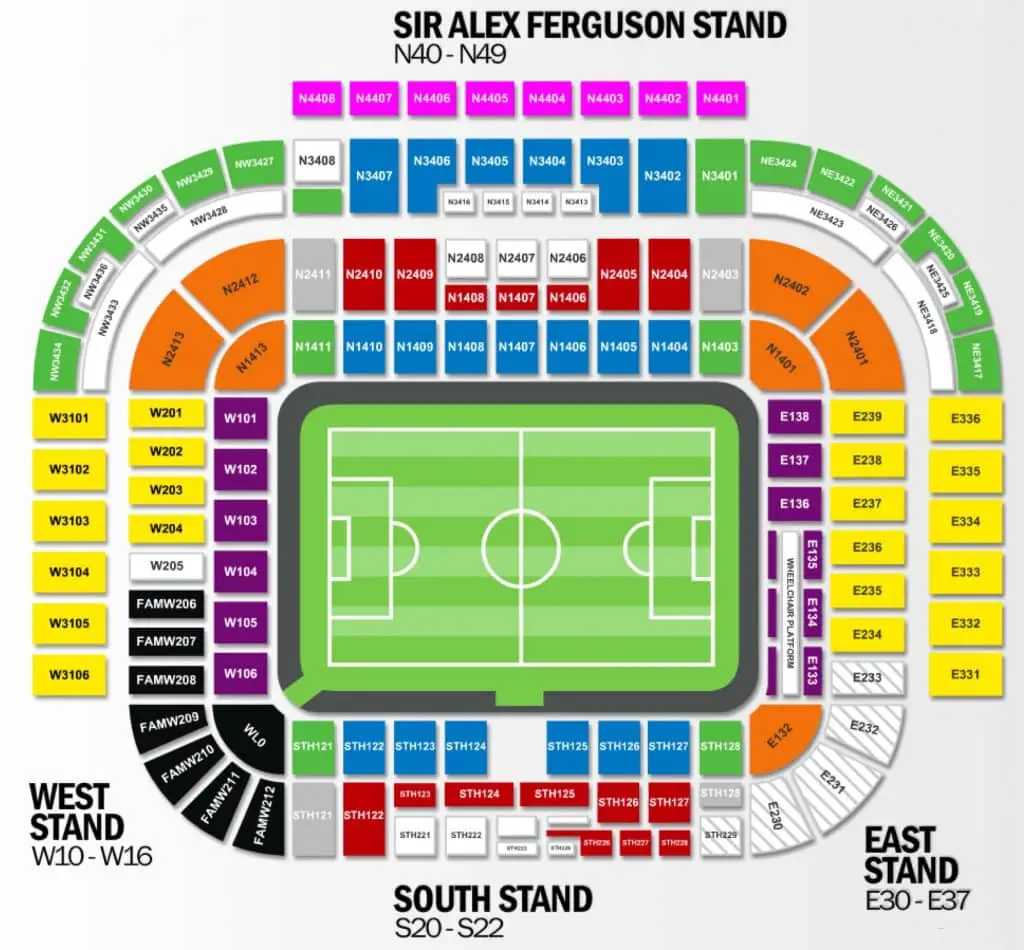
The stadium has been graced by the presence of numerous legendary football players and managers from around the globe. Among them is Sir Matt Busby, who guided Manchester United to claim five league titles and the club’s inaugural European Cup in 1968.
Under Busby’s leadership, the “Busby Babes” emerged, a group of youthful, gifted players who would eventually become one of English football’s most triumphant teams. Iconic players such as George Best, Bobby Charlton, Eric Cantona, Ryan Giggs, and David Beckham have also made their mark at Old Trafford.
Changes to the Old Trafford Football Stadium
Each modernization and enhancement of Old Trafford has contributed to the stadium’s evolution. During the 1930s, the Stretford End stand was erected, pushing the arena’s capacity beyond 50,000.
The subsequent decade welcomed the South Stand, which offered extra seating and standing zones for enthusiasts. The North Stand made its debut in the 1970s, showcasing a contemporary press box and upgraded facilities for both players and spectators.
The most recent transformation in 2006 featured the addition of the state-of-the-art East Stand, complete with extra seating, luxury boxes, and brand new dining establishments and lounges. This renovation also elevated the stadium’s infrastructure by introducing new floodlights and an advanced heating and ventilation system.
Manchester United’s widespread acclaim stems from its extensive track record of triumphs and its assembly of remarkable players and managers.
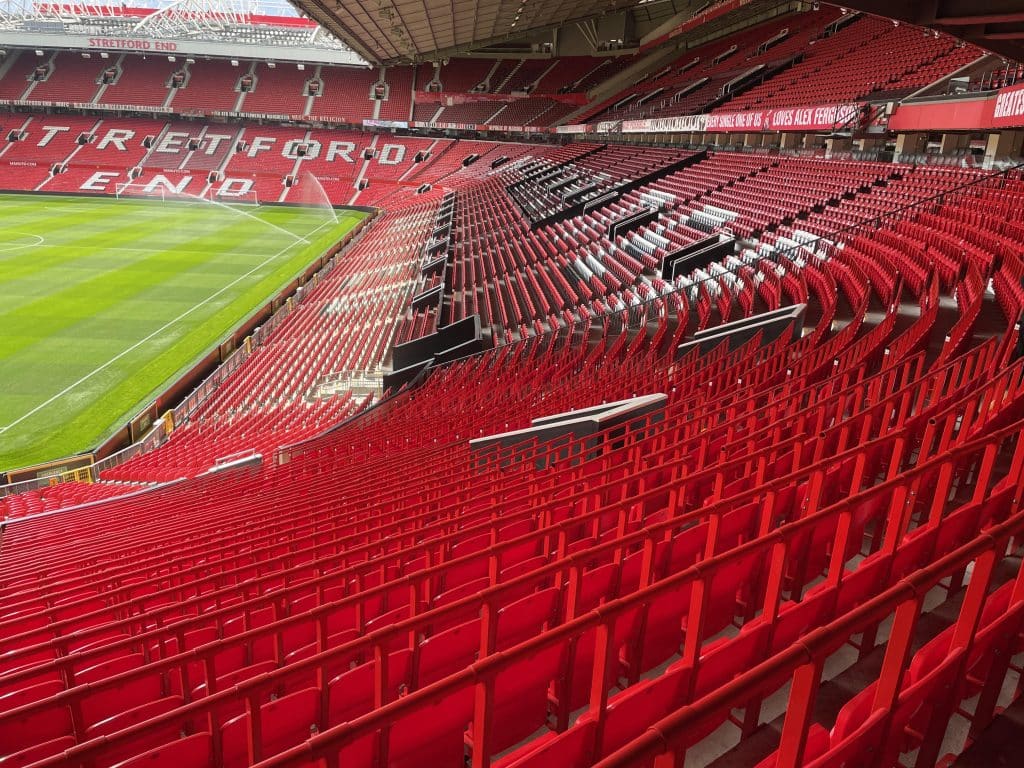
With 20 league titles, three European Cups, and 12 FA Cups under its belt, Manchester United ranks among the most victorious football clubs in history. Fans and supporters from over 200 nations worldwide demonstrate the club’s immense popularity. Additionally, Manchester United boasts a net worth exceeding £3 billion, placing it among the most valuable football clubs.
Old Trafford is a distinguished football stadium with international recognition, drawing fans from all corners of the globe to witness matches at this historical venue.
Where to buy tickets for Manchester United games at Old Trafford
Old Trafford ticket prices vary depending on the competition you wish to attend. High-profile European games in competitions like the Champion’s League will generally cost more than League Cup matches.
Ticket prices also depend on the buyer’s category, such as adults, over 65s, or younger supporters. Concession prices apply to over 65-year-olds and 16-17-year-olds, while younger supporters are aged 18-20. Wheelchair users, visually impaired supporters, and their respective personal assistants receive free admission. Ambulatory disabled supporters pay the standard admission price, and their personal assistants also gain free entry.
League and Domestic Cup Games
- Adults: £36 – £58
- Concessions: £22 – £28
Champion’s League Games
- Adults: £36 – £58
- Concessions: £22 – £28
Europa League Games
- Adults: £24 – £41
- Concessions: £14 – £18
Stand names at Old Trafford:
- Sir Alex Ferguson Stand (North Stand)
- Sir Bobby Charlton Stand (South Stand)
- East Stand
- West Stand
- Etihad Executive Suites
Seating information for Old Trafford
Old Trafford, home to Manchester United Football Club, boasts an impressive total stadium capacity of 76,212 seats, making it the second-largest stadium in the United Kingdom. The stadium’s seating is spread across four main stands and additional corner sections, each providing a unique view and atmosphere for spectators.
The Sir Alex Ferguson Stand, formerly known as the North Stand, has a capacity of 25,500 seats, accounting for approximately 33.5% of the total stadium capacity. This stand is divided into four tiers: Lower, Upper, Tier 2, and Tier 3, with the most extensive section being Tier 2, comprising 8,250 seats or 32% of the stand’s capacity.
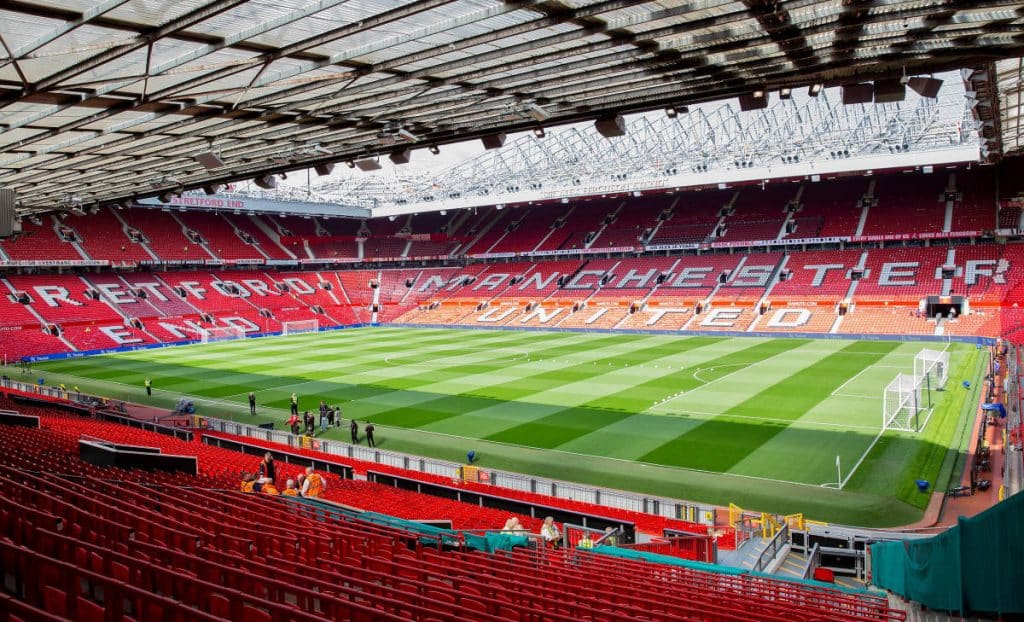
On the opposite side of the stadium, the South Stand accommodates 11,500 spectators, representing 15.1% of the total capacity. Interestingly, the distribution of seats in this stand is different from the Sir Alex Ferguson Stand, with a larger Upper section of 8,500 seats (73.9% of the stand’s capacity) and a smaller Lower section of 2,500 seats.
The East and West Stands each offer 89 rows of seating, with the East Stand providing space for 11,500 fans and the West Stand accommodating 12,000. The East Stand contributes to 15.1% of the stadium’s capacity, while the West Stand makes up 15.7%. Both stands are divided into Lower, Upper, and Tier 2 sections, with Tier 2 being the most extensive in both cases, housing 6,000 seats each.
Furthermore, the four Lower Corner sections have a combined capacity of 6,000 seats, which constitutes 7.9% of the total capacity. Each corner offers 1,500 seats across 48 rows.
The Upper North East and Upper North West Quadrants provide additional seating options for fans, with each quadrant accommodating 4,000 spectators. These areas make up 5.2% of the total stadium capacity and offer up to 33 rows of seating.
Lastly, Old Trafford’s executive boxes offer a more luxurious experience for 1,000 spectators, which accounts for approximately 1.3% of the stadium’s capacity.
In summary, Old Trafford’s seating distribution showcases a diverse range of options for fans, with each stand and section offering unique perspectives of the action on the pitch. The Sir Alex Ferguson Stand remains the largest, while the South, East, and West Stands provide a more even distribution of seating across their respective sections. With the inclusion of corner sections, quadrants, and executive boxes, Old Trafford’s seating capacity and layout cater to various preferences.
Old Trafford seating statistics
Total Stadium Capacity: 76,212
Sir Alex Ferguson Stand (North Stand)
- Capacity: 25,500
- Lower: 4,250 seats in 17 rows
- Upper: 8,000 seats in 32 rows
- Tier 2: 8,250 seats in 34 rows
- Tier 3: 5,000 seats in 19 rows
East Stand
- Capacity: 11,500
- Lower: 1,500 seats in 17 rows (including disabled section)
- Upper: 4,000 seats in 32 rows
- Tier 2: 6,000 seats in 40 rows
West Stand
- Capacity: 12,000
- Lower: 2,000 seats in 17 rows
- Upper: 4,000 seats in 32 rows
- Tier 2: 6,000 seats in 40 rows
South Stand
- Capacity: 11,500
- Lower: 2,500 seats in 11 rows
- Upper: 8,500 seats in 37 rows
Lower Corners
- Capacity: 1,500 (each corner)
- 48 rows x four corners
Upper North East Quadrant
- Capacity: 4,000
- Maximum of 33 rows
Upper North West Quadrant
- Capacity: 4,000
- Maximum of 33 rows
Executive Boxes
- Capacity: 1,000 seats
Old Trafford Grandstand reviews
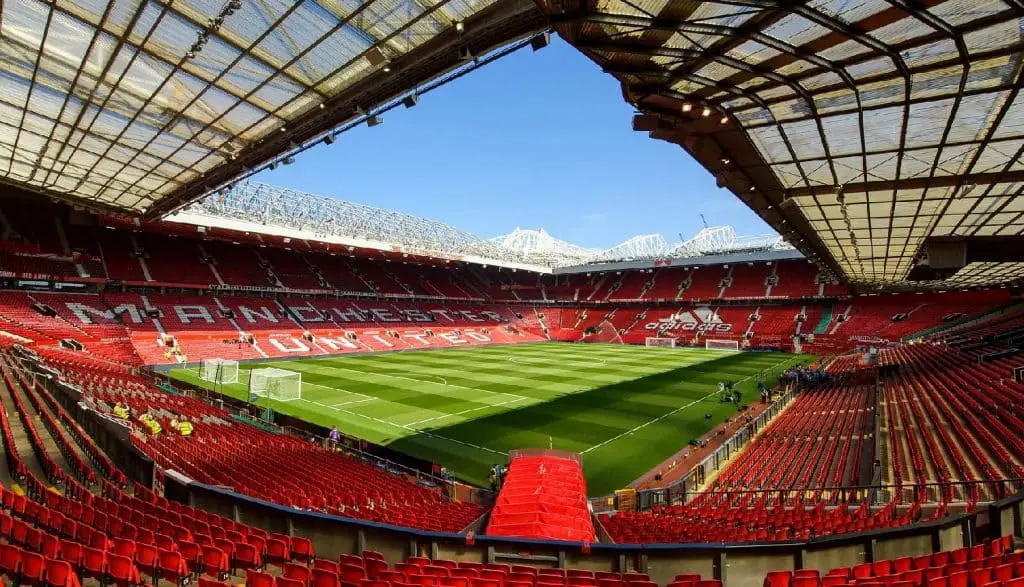
Sir Alex Ferguson Stand (North Stand)
Honoujring the legendary manager who guided Manchester United through an extraordinary period of success, the Sir Alex Ferguson Stand at Old Trafford stands as a tribute to the club’s rich history and promising future. This grandstand review will explore the stand’s unique features and amenities, highlighting what makes it an outstanding match day experience for football enthusiasts around the globe.
Architecture and Design
Rebranded in November 2011 to honor the iconic manager and his incredible impact on the club, the Sir Alex Ferguson Stand, formerly known as the North Stand, boasts a striking and sophisticated architectural design. Combining contemporary aesthetics with traditional elements that embody the club’s spirit, the stand’s curved roof not only offers an impressive visual but also contributes to exceptional acoustics that amplify the atmosphere during matches.
Concourse and Amenities
The stand’s concourse is both spacious and well-planned, providing fans with easy access to the diverse amenities it offers. Numerous bars and food outlets are available, catering to various preferences with their assortment of refreshments and cuisine. Ample restrooms are also present, ensuring a comfortable experience for all attendees.
North Grandstand Reviews
Lower Tier
Offering an intimate perspective of the action, the lower tier of the Sir Alex Ferguson Stand allows fans to observe players’ skills, tactics, and interactions up close.
From seats near the pitch’s center, fans can enjoy a balanced view of the entire field, while seating near the corner flag or goal line provides a more focused perspective of the action in these zones.
Mid Tier
The stand’s mid-tier section boasts superb sightlines, providing a more elevated and comprehensive view of the pitch. From this position, fans can effortlessly follow the game’s flow and study the strategic positioning and movements of the players.
Seating near the halfway line in the mid-tier offers an optimal view of both halves of the field, while seats closer to the touchlines provide a unique angle to witness the intricacies of play along the sides.
Upper Tier
Providing a bird’s-eye view of the entire pitch, the upper tier of the Sir Alex Ferguson Stand enables fans to appreciate the game from a wider perspective. This viewpoint is ideal for those who enjoy dissecting team formations, tactics, and off-the-ball movement.
Despite the increased elevation, the stand’s design ensures excellent visibility, with no obstructions impeding the view of the pitch.
Fans seated in the upper tier can choose central seats for a panoramic view or opt for seats closer to either end of the pitch to concentrate on the action in the respective penalty areas.
Executive Boxes and Hospitality Areas
Offering a luxurious and exclusive matchday experience, the executive boxes and hospitality areas in the Sir Alex Ferguson Stand feature premium seating and exceptional pitch views.
These areas provide an elevated perspective, allowing guests to savor the game in unparalleled comfort and style.
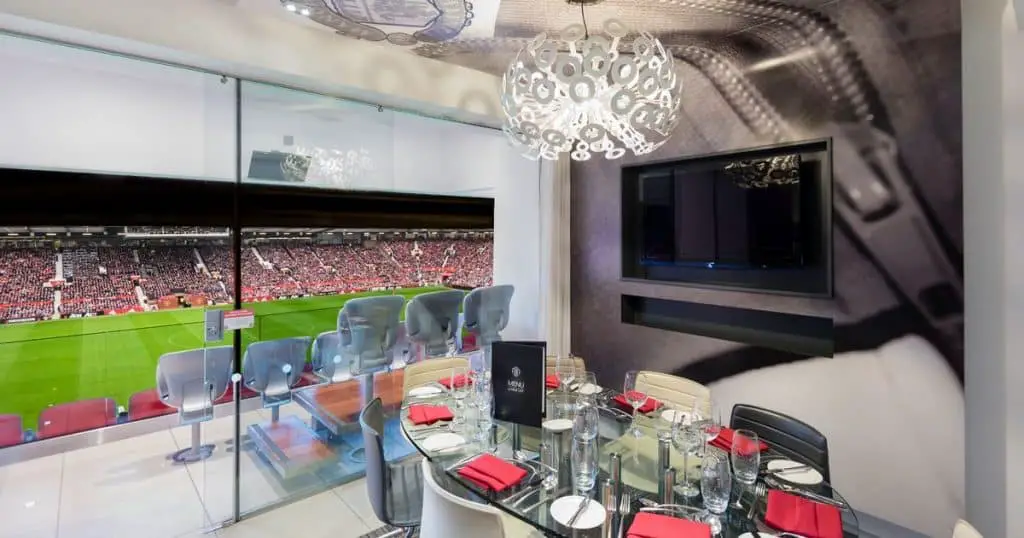
The glass-fronted boxes ensure unobstructed views, while the cozy seating and additional amenities create a memorable atmosphere for discerning fans.
Hospitality Packages
For a more luxurious matchday experience, the Sir Alex Ferguson Stand provides an array of hospitality packages.
These packages grant access to exclusive areas within the stand, such as the plush Sir Alex Ferguson Suite, where guests can indulge in fine dining and an open bar while taking in panoramic views of the pitch.

With dedicated hosts and matchday entertainment, the hospitality experience in the Sir Alex Ferguson Stand is truly unparalleled.
Atmosphere
The atmosphere within the Sir Alex Ferguson Stand is electrifying, particularly during high-stakes matches. The passionate support of the fans, combined with the stand’s superb acoustics, creates a resounding roar that reverberates throughout the stadium. This energy not only motivates the players on the pitch but also provides an exhilarating experience for spectators.
Sir Bobby Charlton Stand (South Stand)
The Sir Bobby Charlton Stand, situated on the southern side of Old Trafford, honors one of Manchester United’s most celebrated players. As the largest stand in the stadium with a seating capacity of 25,200, it delivers a superb matchday experience for football enthusiasts. Seating and Perspectives:
The Sir Bobby Charlton Stand features a variety of remarkable views, thanks to its southern location in Old Trafford and its position relative to the pitch.
Fans can select from numerous seating choices, each offering a distinct angle of the game. Here are additional details about the various perspectives available in this grandstand.
Lower Tier
The lower tier seating in the Sir Bobby Charlton Stand allows fans a close encounter with the pitch, delivering an intimate experience of the action.
Fans can opt for seats near the halfway line for a balanced view of the entire field, or choose seats near the corner flag or goal line to concentrate on specific areas of play.
Furthermore, the lower tier presents an excellent vantage point to observe individual player movements, tactics, and interactions during the match. Being in such close proximity to the pitch enables fans to genuinely appreciate the players’ abilities and athleticism.
Upper Tier
The Sir Bobby Charlton Stand’s upper tier provides a more elevated perspective, enabling fans to observe the entire pitch and easily follow the match’s flow. From this viewpoint, spectators can appreciate the players’ strategic positioning and off-the-ball movements.
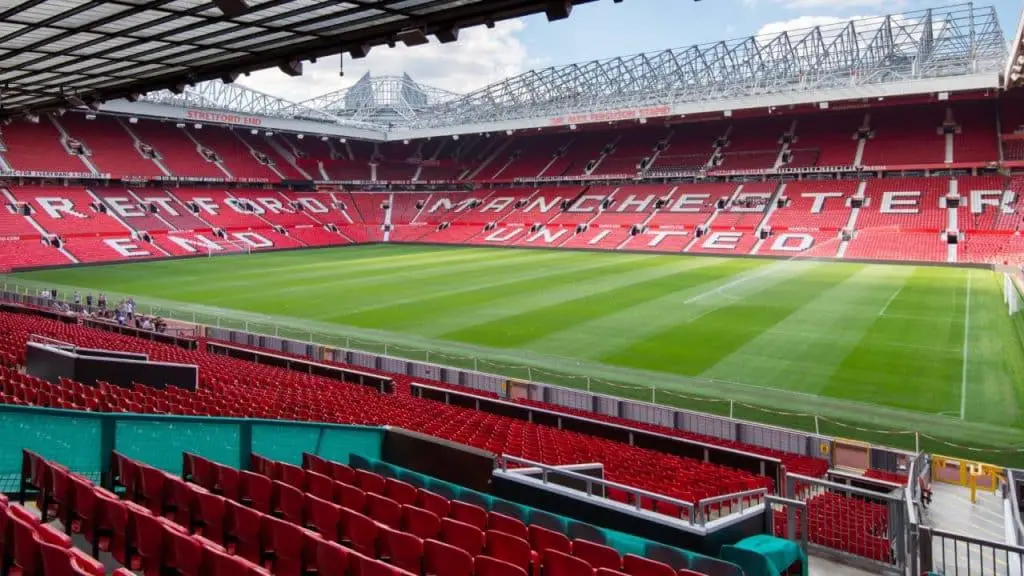
Upper tier seats near the halfway line offer an optimal view of both halves of the field, while seats closer to the touchlines provide a unique angle to witness plays along the flanks.
Executive Boxes and Hospitality Areas
For fans seeking a more opulent matchday experience, the Sir Bobby Charlton Stand’s executive boxes and hospitality areas provide exceptional pitch views in a high-end setting.
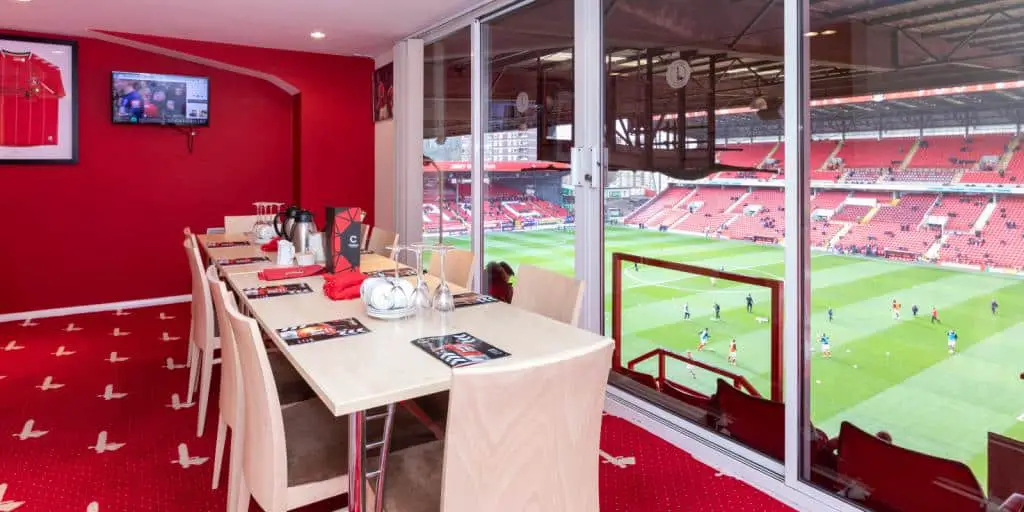
The glass-fronted boxes ensure an unobstructed sightline, while comfortable seating and extra amenities contribute to a remarkable experience for guests.
Concourse and Amenities
The concourse within the Sir Bobby Charlton Stand offers easy access to amenities such as food outlets, bars, and restrooms. Fans can indulge in a variety of food and beverage options while enjoying the match.
East Stand
The stand provides a family-friendly atmosphere, complete with designated areas for families to relish the match together. These sections offer a more controlled environment, suitable for younger fans.
East Stand Situated on Old Trafford’s east side, the East Stand is among the four stands at the stadium and acts as the second-largest stand, boasting a capacity of 18,300. This two-tiered stand accommodates both home and away fans, offering a distinctive matchday experience. Although the East Stand’s views and atmosphere might not compete with those of the Sir Alex Ferguson Stand or the Sir Bobby Charlton Stand, it remains a viable choice for fans seeking more budget-friendly seating.
Seating and Perspectives
The East Stand provides satisfactory pitch views from both the lower and upper tiers. Although these views might not rival those from the Sir Alex Ferguson Stand or the Sir Bobby Charlton Stand, they remain suitable for enjoying the match. The lower tier, home to some of the more spirited fans, allows a closer glimpse of the action on the pitch, while the upper tier presents a wider perspective of the game.
The East Stand at Old Trafford features a variety of perspectives from different seating positions, guaranteeing fans can relish the match from their preferred viewpoint. Here are more details on the range of views available within the East Stand.
Lower Tier
The East Stand’s lower tier provides fans with a nearer view of the pitch, immersing them in the action. Lower tier seats near the halfway line offer a balanced perspective of the entire field, simplifying game progression tracking. Alternatively, seats closer to the goal line or corner flag enable fans to concentrate on the action in those specific areas and witness goal-scoring chances or set-pieces up close.
Being in the lower tier also allows for a better appreciation of individual player movements, tactics, and interactions during the match. The close proximity to the pitch enables fans to fully experience the players’ speed and skill.
Upper Tier
The East Stand’s upper tier offers a more elevated and panoramic view of the game. From this higher vantage point, fans can observe the entire pitch and gain a better understanding of the team’s tactics, formations, and off-the-ball movements.
Away Fans Section
The designated area for away fans in the East Stand offers a unique perspective of the pitch, especially for visiting supporters.

This section, situated in the stand’s corner, enables away fans to enjoy a clear view of the action while surrounded by fellow supporters from their team.
Atmosphere
While the East Stand’s atmosphere might not match the intensity of other grandstands, it still provides a decent environment for watching a Manchester United match.
West Stand (Stretford End)
Located on the west side of Old Trafford, the West Stand is one of the stadium’s four stands and serves as the third largest with a capacity of 14,600. This two-tiered stand houses the Manchester United club museum and several corporate boxes.
While the views and atmosphere may not compare to those of the Sir Alex Ferguson Stand or the Sir Bobby Charlton Stand, the West Stand remains a good option for fans seeking a more affordable seating choice.
The West Stand is also known as the Stretford End, home to the most passionate of supporters who are known for creating an electric atmosphere during matches. The Stretford End is one of the most iconic terraces in football and contributes to the overall energy of the stadium. Fans seated in this area can expect to be surrounded by fervent chants and songs throughout the match.
Seating and Views
The West Stand at Old Trafford presents a variety of viewing angles for fans, ensuring an enjoyable matchday experience. While the views may not be as premier as those from the Sir Alex Ferguson Stand or the Sir Bobby Charlton Stand, the West Stand still provides a range of perspectives that allow fans to appreciate the game. Let’s delve into the unique views offered in both the lower and upper tiers of the West Stand:
Lower Tier
The lower tier of the West Stand offers an up-close perspective of the match, with seats located nearer to the pitch. This close proximity allows fans to witness the players’ movements, positioning, and communication, immersing them in the dynamics of the game.
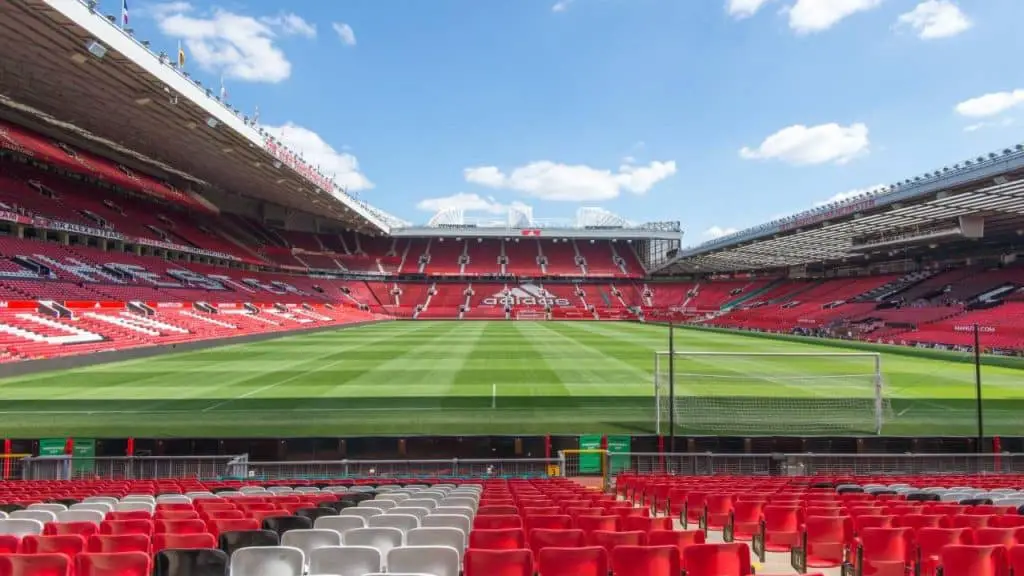
Seats in the lower tier near the center circle provide a balanced view of the action on both halves of the field, enabling fans to observe the teams’ transitions between attack and defense.
Meanwhile, seats closer to the penalty areas offer an exclusive perspective on thrilling moments such as goals, near misses, and saves, allowing fans to appreciate the finesse and skill of both attackers and goalkeepers.
Upper Tier
The upper tier of the West Stand offers a bird’s-eye view of the pitch, allowing fans to grasp the game’s tactical aspects more clearly.
From this elevated vantage point, spectators can better understand the teams’ formations, strategies, and off-the-ball movement.
Seats in the upper tier near the halfway line provide a panoramic perspective, enabling fans to follow the entire game with ease. Those seated towards the corners can focus on the teams’ wide play, crossing, and overlapping runs.
Additionally, the upper tier offers an optimal angle for observing intricate passing sequences and the build-up of attacks.
Atmosphere
While the atmosphere in the West Stand may not be as intense as that in the Stretford End, it still provides a decent environment for watching a Manchester United match. Fans in the West Stand contribute to the overall energy of the stadium, supporting their team with chants and songs throughout the match.
Accessibility and Amenities
The West Stand features accessible seating areas and restrooms for fans with disabilities, ensuring that all supporters can comfortably enjoy the matchday experience.
Ramps and lifts are also available to help navigate the stand with ease. The concourse offers various food and beverage options, allowing fans to enjoy refreshments during the match.
The West Stand at Old Trafford offers a solid match day experience for fans seeking a more affordable option. While the views and atmosphere may not be on par with other areas of the stadium, the West Stand provides a decent environment for enjoying a Manchester United match.
Expansion
The Stretford End is due for expansion too with some exciting prospects in store to increase the overall capacity of Old Trafford.
Affordability
One of the main advantages of the West Stand is its affordability compared to the Sir Alex Ferguson Stand or the Sir Bobby Charlton Stand. Fans looking for a less expensive seating option without sacrificing too much in terms of views or atmosphere can find value in the West Stand.
Getting to Old Trafford
Old Trafford Railway Station
Old Trafford railway station is located in Stretford, Greater Manchester, adjacent to the famous Old Trafford football stadium. The station lies on the southern Liverpool Lime Street-Manchester Piccadilly railway line and is positioned between Deansgate and Trafford Park.
Specifically catering to matchday crowds, Old Trafford railway station is directly next to the football stadium, with passengers exiting the station near the South Stand. It holds the distinction of being one of the few National Rail stations in Great Britain not included in the Office of Rail and Road (ORR) station usage statistics.
Established in 1910, Old Trafford railway station was initially named Manchester United Football Ground railway station, sharing the same birth year as the renowned stadium. The station underwent a name change in 1949, adopting its current title, Old Trafford railway station.
Northern services operate trains from Manchester Piccadilly to Liverpool Lime Street and Wigan North Western, facilitating access to the station. On matchdays, the station serves as a crucial transport hub for Manchester United fans. Furthermore, it is a popular destination for tourists visiting the iconic stadium.
In terms of public transport connections, Old Trafford railway station is well-supported. A Metrolink tram stop is located nearby, complemented by several bus stops in the vicinity. This combination of transport options ensures smooth accessibility for passengers.
Parking facilities near the station are also abundant. The stadium boasts a large car park, while the surrounding area features several pay-and-display car parks for added convenience.
How to get to Old Trafford by bus
Several bus routes connect Old Trafford to different parts of Manchester and the surrounding areas. The primary bus operators servicing the stadium are Stagecoach Manchester and Arriva North West.
Some of the key bus routes to consider when planning your trip to Old Trafford include:
- Route 255: This bus service runs from Partington to Manchester Piccadilly Gardens via Old Trafford. It stops near the stadium, providing convenient access for passengers.
- Route 256: The 256 route connects Flixton to Manchester Piccadilly Gardens and also stops near Old Trafford. Both Route 255 and 256 offer regular services, ensuring a consistent and reliable means of transportation.
- Route 53: This bus route runs between Cheetham Hill and Pendleton, passing through Old Trafford along the way. The service frequency of Route 53 is high, making it a practical option for reaching the stadium.
- Route 79: Connecting Clifton to Stretford, the 79 route stops near Old Trafford as well With a decent frequency, this bus service is another viable option for passengers.
In addition to these primary bus routes, other services like Route X50 and Route 250 operated by Stagecoach Manchester provide express services between Manchester city centre and the Trafford Centre, stopping close to Old Trafford. These express services are especially convenient on matchdays and during major events held at the stadium.
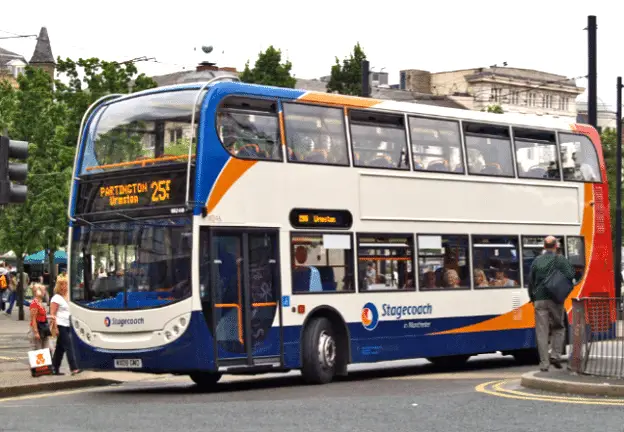
It is worth noting that on matchdays, several bus services may have altered routes to accommodate increased traffic and road closures around the stadium. It is advisable to check for any route changes or updates with the bus operators or on the Transport for Greater Manchester (TfGM) website before your journey.
For individuals arriving in Manchester by train, the Manchester Piccadilly railway station is well-connected to Old Trafford by bus. Bus services like Route 255 and Route 256, mentioned earlier, can be boarded from Manchester Piccadilly Gardens, which is just a short walk from the train station. These buses will take you directly to the stadium, ensuring a seamless transfer.
Bus tickets can be purchased on board, at ticket machines located at bus stops, or through mobile apps operated by the bus companies.
It is important to have the correct change ready when purchasing tickets on board the bus. Alternatively, day travel cards or contactless payment options may be available, providing added convenience and flexibility for passengers.
Where to park at Old Trafford Stadium
When attending an event or match at Old Trafford Stadium, various parking options are available. This guide provides essential information on official car parks, park and ride schemes, on-street parking, and private car parks to help you make the best choice for your visit.
Official Car Parks
The stadium’s official car park is the most convenient choice, with a capacity of 21,000 spaces. Open on matchdays and for stadium tours, the car park is divided into several areas: South Stand, East Stand, and North Stand. Parking fees vary depending on the car park area and time of year. For instance, on matchdays, parking in the South Stand car park costs £30.
Park and Ride
A more affordable alternative to the official car park is the park and ride schemes available in the area. However, consider the additional cost of bus or tram fares to reach the stadium.
The park and ride schemes are located at:
- Trafford Bar: Situated on Talbot Road, Trafford Park, with a bus fare to the stadium of £2.50.
- Carrington: Located on Carrington Lane, Trafford Park, with a bus fare to the stadium of £2.50.
- Whalley Range: Positioned on Whalley Range, Manchester, with a bus fare to the stadium of £3.00.
- Sale Water Park: Found at Sale Water Park, Sale, with a bus fare to the stadium of £3.00.
On-Street Parking
Although on-street parking is available around Old Trafford Stadium, finding a space on matchdays can be challenging. Parking restrictions differ from street to street, so carefully read any posted information. Utilize a parking map to find available on-street parking spaces near the stadium.
Private Car Parking spaces
Several private car parking spaces are situated near Old Trafford Stadium. These car parks can be more cost-effective than the official car park but require advance booking, Private car park fees typically range from £10 to £20 on match days.
You can book them through the app JustPark available for iPhone and Android as well as via your web browser.
There’s a limited supply of parking spaces so you’ll need to book now to avoid missing out.
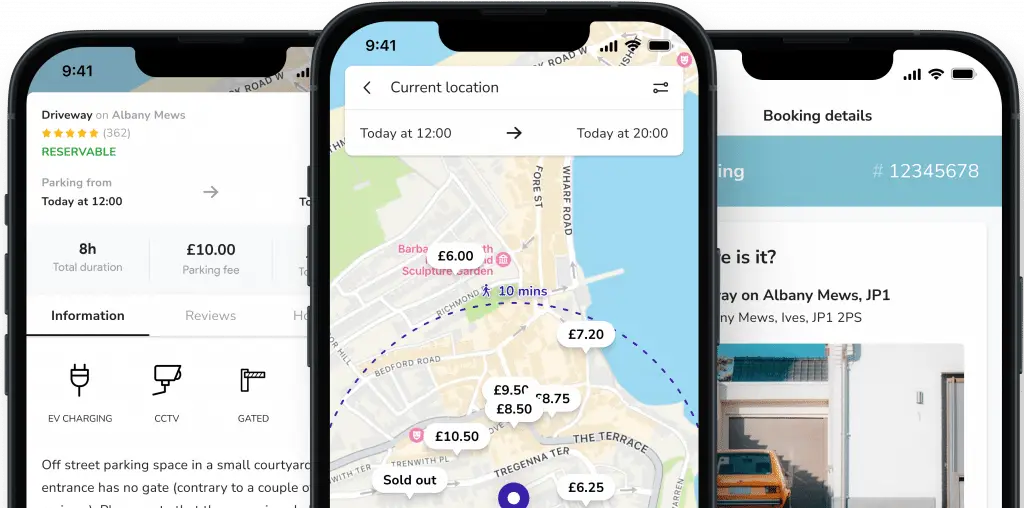
Additional Parking Tips:
Arrive Early: To secure a parking space, it’s crucial to arrive early on matchdays, as parking can be busy.
Check Restrictions: Since parking restrictions vary, always read any additional posted information before parking.
Use a Parking Map: A parking map can assist you in finding the most suitable parking location and time.
Be Aware of Your Surroundings: Pay attention to your surroundings when parking, particularly on matchdays.
Be Patient: As parking may be difficult to find on matchdays, exercise patience during your search.
Good advice for visiting Old Tafford
Old Trafford Stadium, the home of Manchester United, is a must-visit destination for football enthusiasts and tourists alike. To make the most of your visit, here are some helpful tips and advice for a memorable experience.
Plan Your Visit
Research the stadium’s schedule to determine the best time for your visit. Matchdays can be crowded, but they offer an unforgettable atmosphere. On non-matchdays, you can explore the stadium on a guided tour, which includes the dressing rooms, players’ tunnel, and pitchside access. Booking your tickets in advance is highly recommended.
Dress Appropriately
The weather in Manchester can be unpredictable, so dress in layers and bring a waterproof jacket or umbrella. Comfortable footwear is essential, as you may be walking or standing for extended periods.
Arrive Early
On matchdays, plan to arrive at least 90 minutes before kick-off to avoid traffic and enjoy pre-match entertainment. This allows enough time for security checks, finding your seat, and purchasing food or merchandise.
Family-Friendly Facilities
Old Trafford is a family-friendly stadium with various facilities, including baby changing areas, a family stand, and dedicated staff to ensure a comfortable visit for families with children. If attending a match, consider purchasing tickets in the family stand, where the atmosphere is more suitable for young fans.
Food and Drink
The stadium offers a range of food and drink options, from traditional stadium fare like burgers and hot dogs to healthier alternatives. Keep in mind that alcohol consumption is not allowed in the seating areas during matches. For a unique dining experience, visit the Red Café or enjoy a meal at one of the many nearby restaurants and pubs.
Explore the Museum and Megastore
A visit to the Manchester United Museum is an excellent opportunity to learn about the club’s rich history and see exclusive memorabilia. The museum is open daily and offers discounted entry for matchday ticket holders. Don’t forget to stop by the Megastore to pick up souvenirs or official merchandise.
Accessibility
Old Trafford is committed to providing a comfortable and accessible experience for all visitors. Wheelchair-accessible seating, dedicated parking spaces, and accessible toilets are available throughout the stadium. If you require assistance, contact the club in advance to make necessary arrangements.
Stay Safe and Follow the Rules
For the safety and enjoyment of all visitors, adhere to the stadium’s rules and regulations. Prohibited items include large bags, selfie sticks, and flares. Smoking, including e-cigarettes, is not permitted inside the stadium. Familiarize yourself with the stadium’s safety procedures and follow the instructions of staff and stewards.
Public Transport:
Utilize public transportation to minimize parking hassles and reduce your carbon footprint. Old Trafford is easily accessible by train, tram, and bus. Plan your journey in advance and allow extra time for potential delays or congestion.
Capture the Moment: Bring your camera or smartphone to capture memories of your visit. However, be mindful of other visitors and avoid obstructing their view or causing disruptions during the match or tour. Always respect the privacy of players and staff.

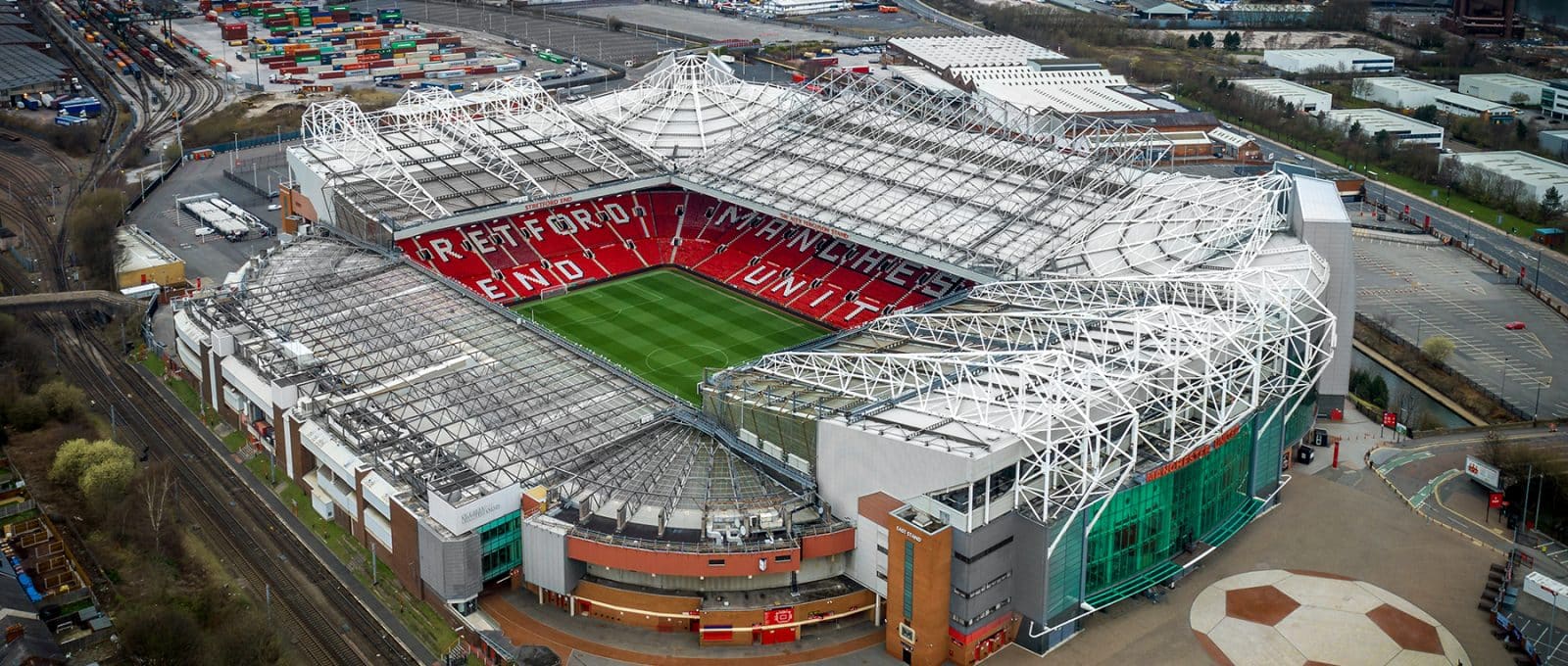

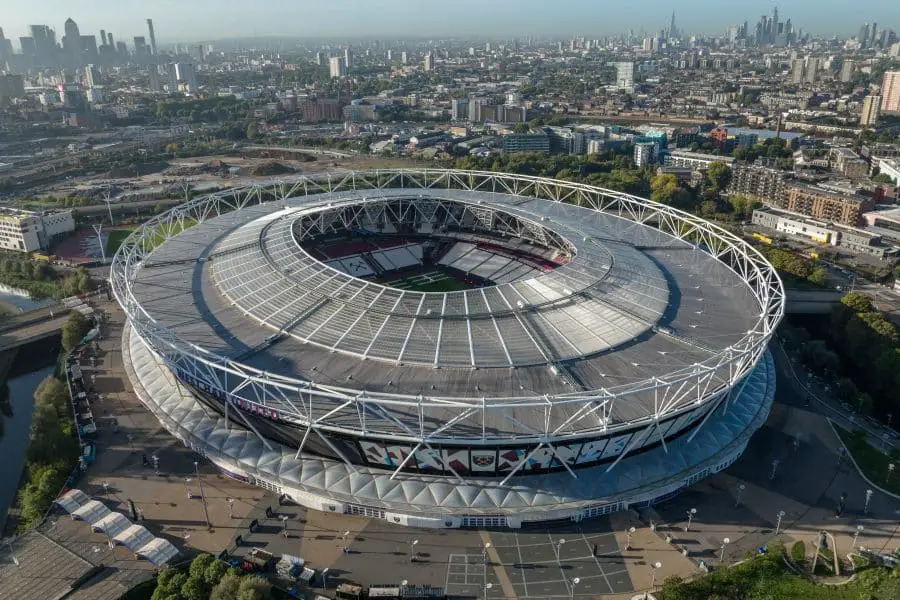
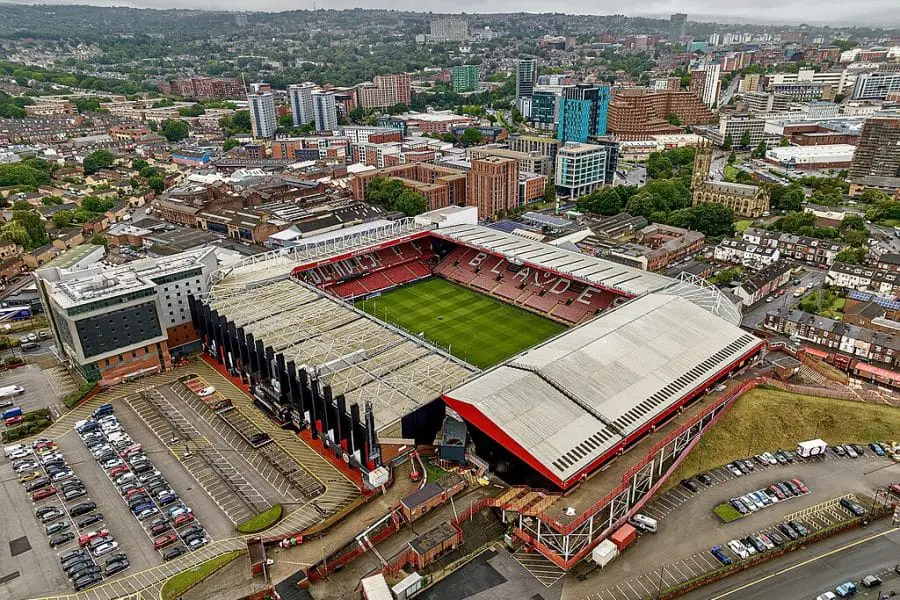
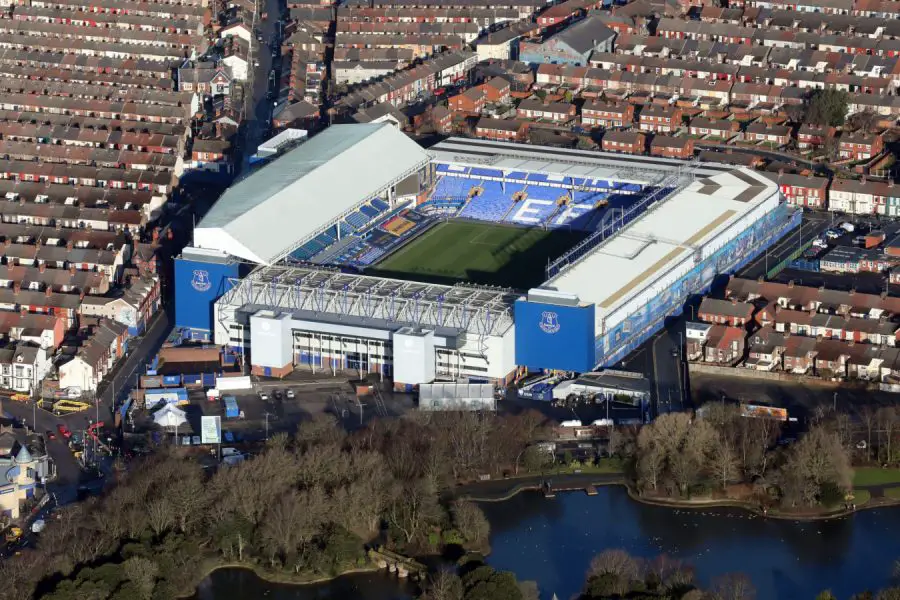
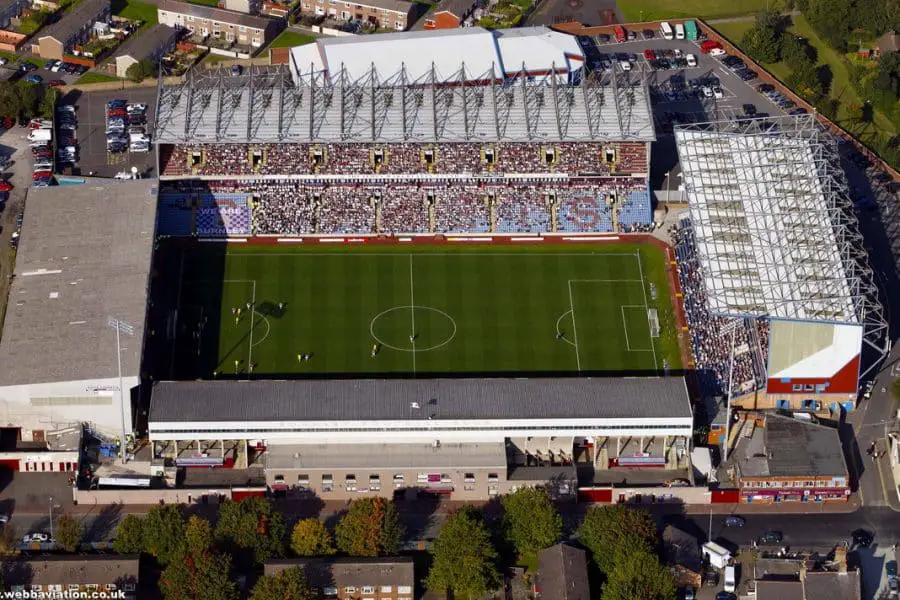
Leave a Comment